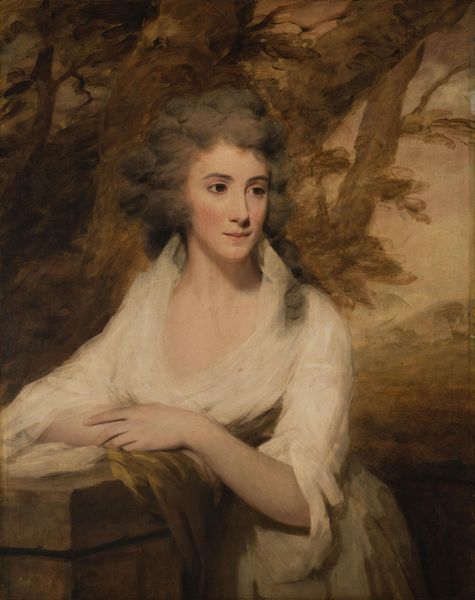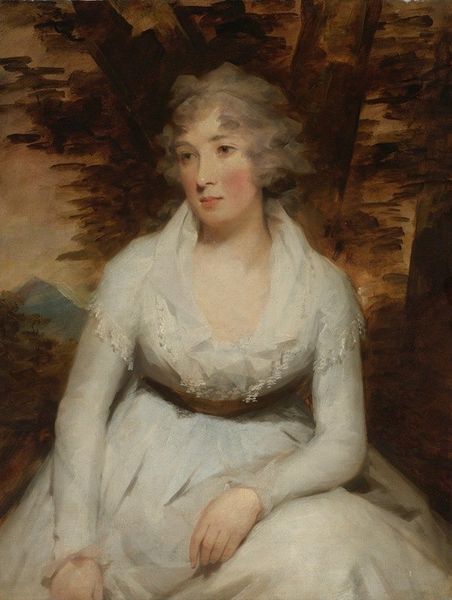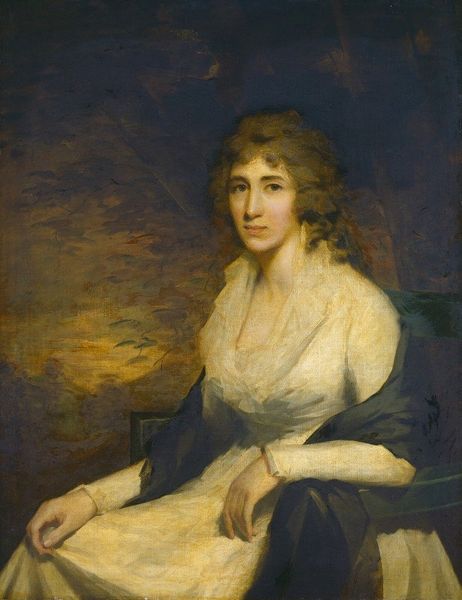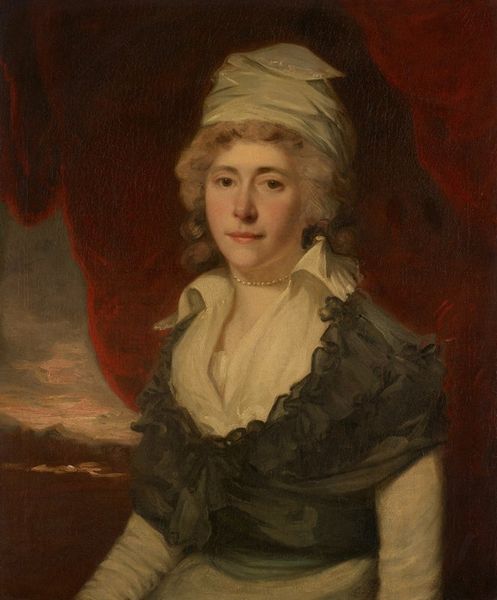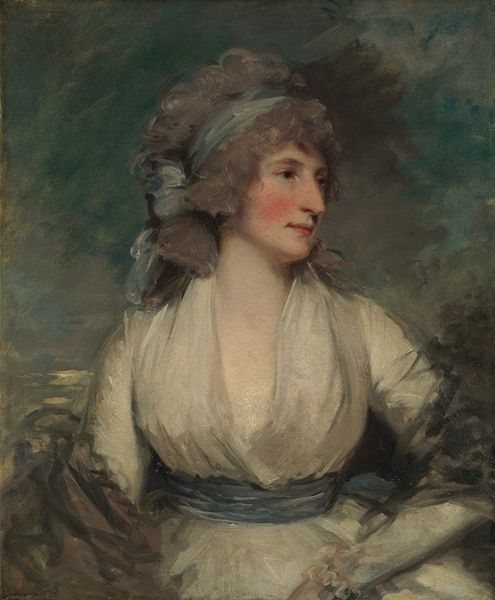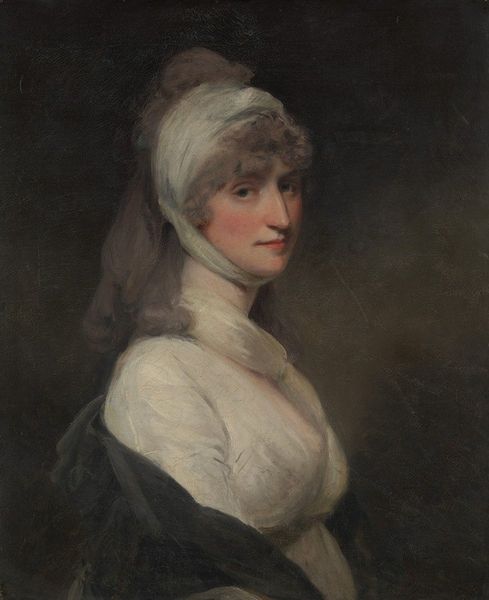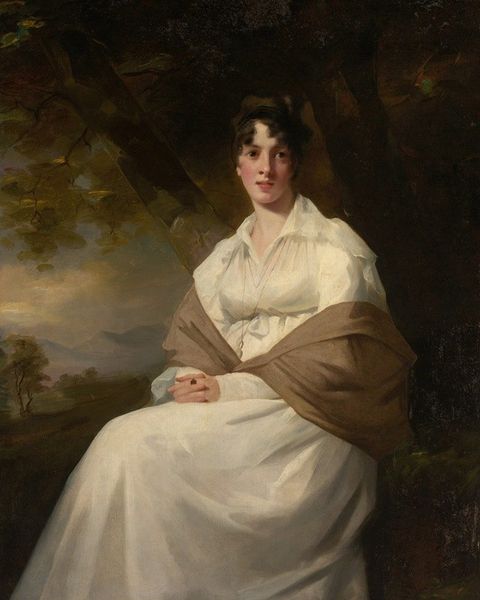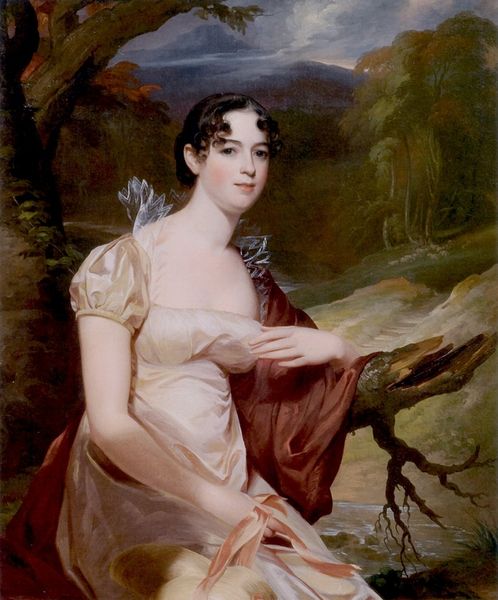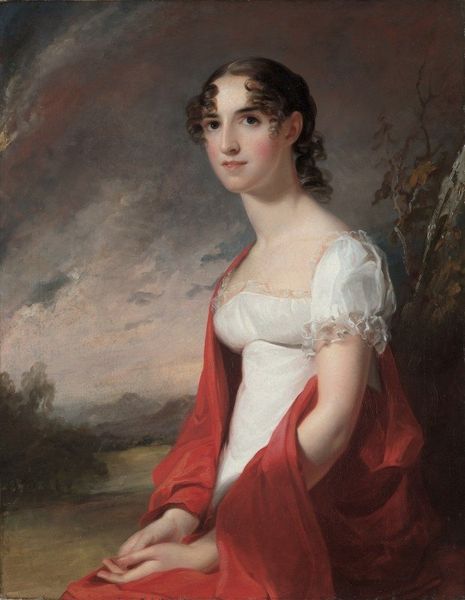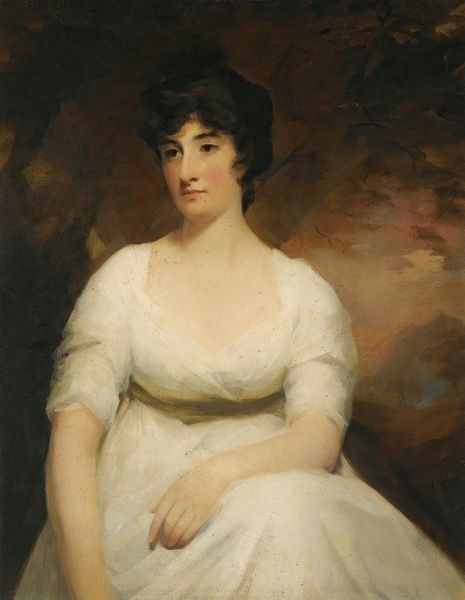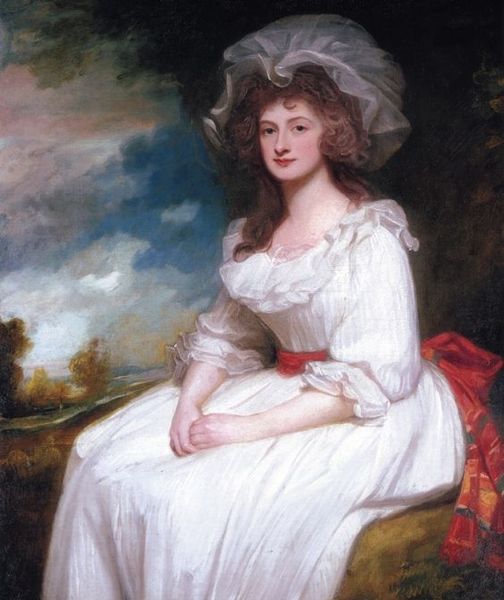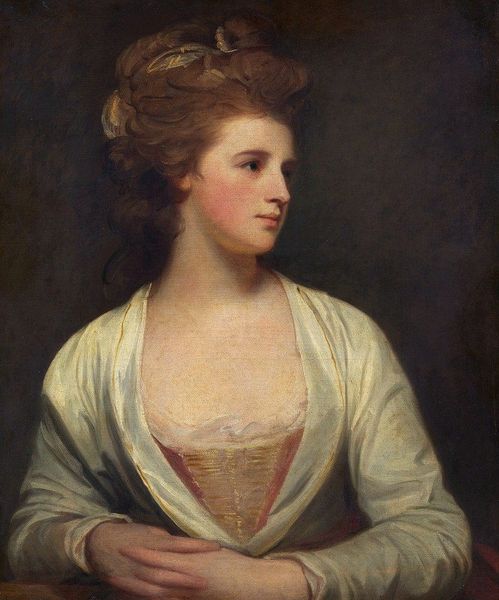
painting, oil-paint
#
portrait
#
figurative
#
painting
#
oil-paint
#
landscape
#
oil painting
#
romanticism
#
genre-painting
Copyright: Public Domain: Artvee
Curator: Here we have Sir Henry Raeburn’s oil painting, "Miss Eleanor Urquhart," created around 1793. Editor: My immediate impression is a certain wistfulness. Her pale dress and complexion create an ethereal quality, amplified by the wild, almost turbulent landscape behind her. Curator: Raeburn was the leading portrait painter in Edinburgh during the late 18th century. He benefitted greatly from the patronage of the Scottish gentry, capturing their likeness and aspirations within the larger social and political currents of the time. Editor: And what about the background? The Romantic sensibility really comes through. Mountains in the background were often symbolic of resilience and perhaps even the sublime, certainly markers of the picturesque ideal embraced at the time. Her positioning against this background must hold significance. Curator: It places her within a specific social context but also enhances the symbolic association of beauty and status intertwined with land ownership. Land became a symbolic marker of cultural identity during the Enlightenment, something actively promoted through artistic commissions. Editor: Indeed. Her white dress and the somewhat restrained expression could also suggest innocence and purity – key virtues for women of that era in portraiture, or do you think she is conveying some other quality here? Curator: Purity yes, but also control. White, while representing purity, would have also been costly, so indicates the sitter's wealthy background. Editor: Do you think it is fair to see echoes of older conventions such as placing symbolic clues in landscapes, as done in medieval allegories? Raeburn places the lady against a vast scenery like early renditions of the Madonna and child... Curator: Absolutely. Artists often draw upon earlier traditions while simultaneously reinventing them to fit new social demands and conventions. This piece operates within those tensions, using recognisable artistic cues, while creating a modern fashionable woman of Scotland. Editor: It is interesting to consider how artworks accumulate and repurpose cultural memory. Even now, generations later, these visual elements carry layers of meaning and social nuance. Curator: Precisely. Raeburn was a man very much rooted in his time. I’m glad that looking at this work enables us to revisit and better appreciate how status and imagery evolved together in Scotland during the late 1700's.
Comments
No comments
Be the first to comment and join the conversation on the ultimate creative platform.
